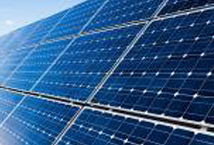- Home
- ESEC SCOPE
- Publications
- Electrical energy storage - a crucial aspect of the energy transition
Electrical energy storage - a crucial aspect of the energy transition
Visuel

Type of text :
Opinion
Type of referral :
Own initiative
Working group :
Section for Economic Activities
Date d'adoption
Date adopted : 06/09/2015
Rapporteur(s) :
Photo

Alain OBADIA
Qualified Individuals Group
Overview
Présentation
Beyond the differences of opinion that have been expressed regarding the energy transition bill, the integration of a greater proportion of renewable energy into the French energy mix has met with widespread agreement in our country. Furthermore, the need to drastically reduce greenhouse gas emissions (and CO2 in particular), which requires the objective of decreasing our emissions fourfold by 2050 to be met, is now a matter of top priority for the majority of our fellow citizens.
At the same time, this integration of renewable energy must take into account the intermittent manner in which certain forms of renewable energy are produced. A number of approaches can help achieve this, including improving energy efficiency, strengthening networks and even streamlining the methods of consumption permitted by the rise in smart grids.
Electrical energy storage is also an important factor:
- With regard to stationary storage, it is important to avoid losing the energy produced when production is greater than demand and, conversely, to ensure consistency of supply when part of the solar or wind energy generating facilities are not producing. Storage is therefore designed to support the stability of the electricity network;
- With regard to mobility, in order to encourage an increase in the use of electric vehicles, which would appear to be an appropriate way of tackling one of the greatest sources of CO2 emissions, namely transport, provided, of course, that the electricity used is largely carbon-free.
This opinion reiterates the specific nature of the way in which the French electricity network functions and reviews the various technologies available, their respective levels of maturity and their performance, not forgetting their environmental impact and the current and foreseeable economic conditions surrounding their development.
THREE TECHNOLOGICAL OPTIONS AT THE HEART OF THE DEBATE
The ESEC believes there is an urgent need to create the essential dynamic required to ensure that the foreseeable technologies and necessary investment will be available both to support the networks and to meet decentralised needs. Electrical energy storage technologies must be developed as a matter of urgency in order to contribute to the development of carbon-free mobility.
In this respect, our Assembly has noted that the various technologies available have matured to widely varying degrees and that their economic model remains uncertain. Moreover, there does not appear to be any form of technological approach that would be likely to provide a single response to the variety and heterogeneity of the problems presented. Likewise, it is largely premature to categorically claim that such or such approach should be ruled out.
With regard to our country, the ESEC believes that three technological options should now be placed at the heart of the debate, these being energy transfer pumping stations (STEP - Station de transfert d'énergie par pompage), batteries and the hydrogen sector (including power-to-gas).